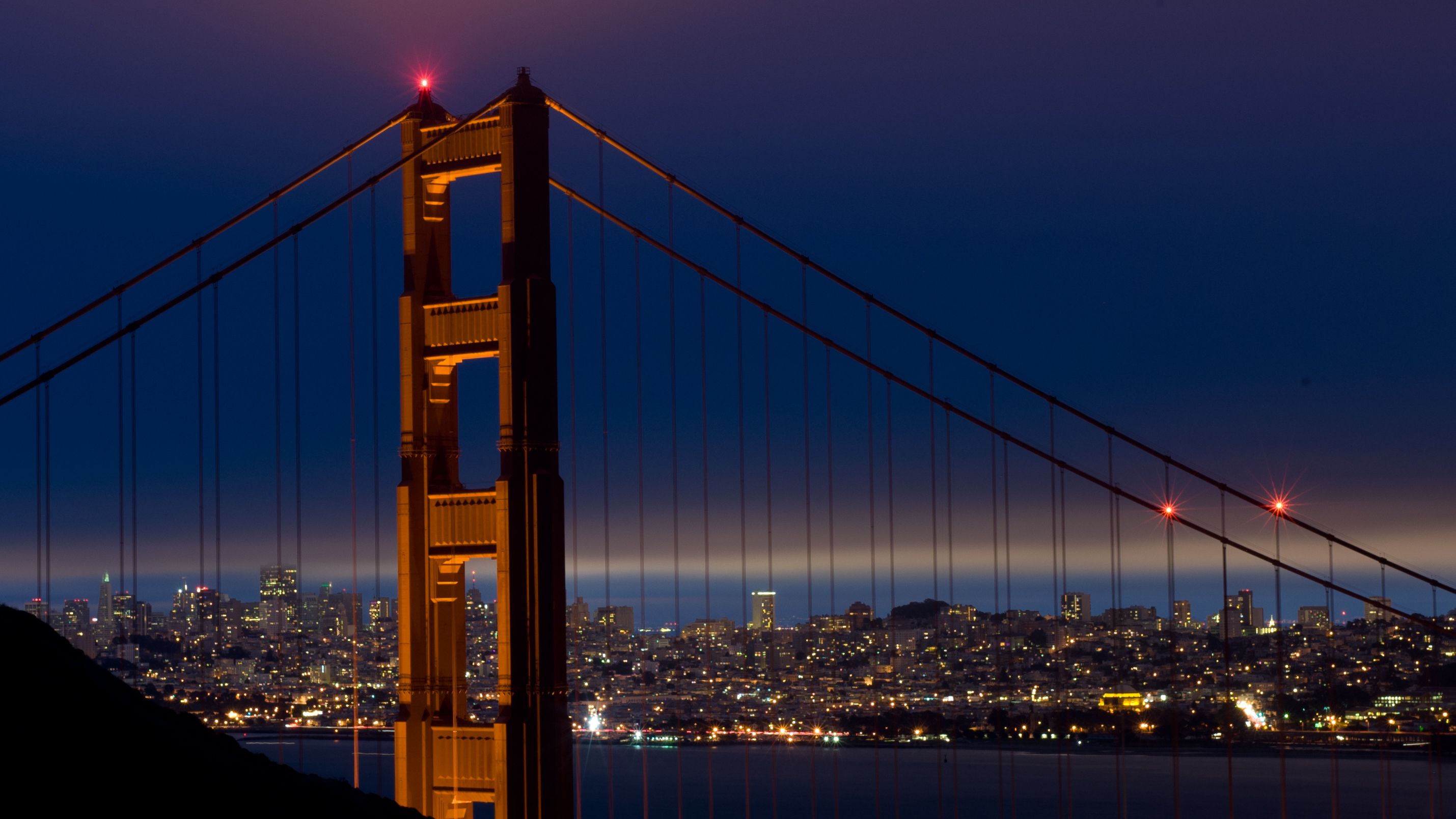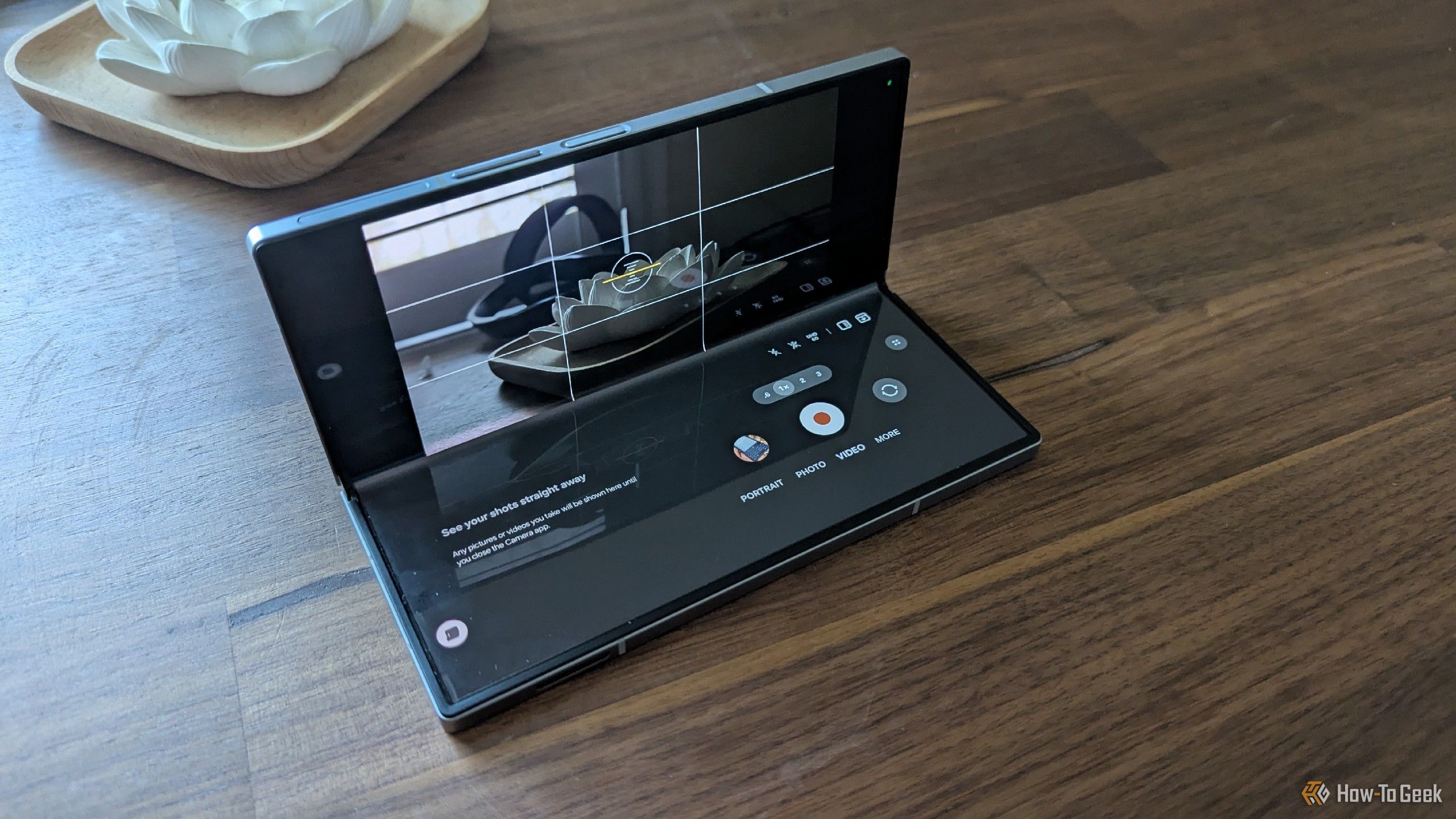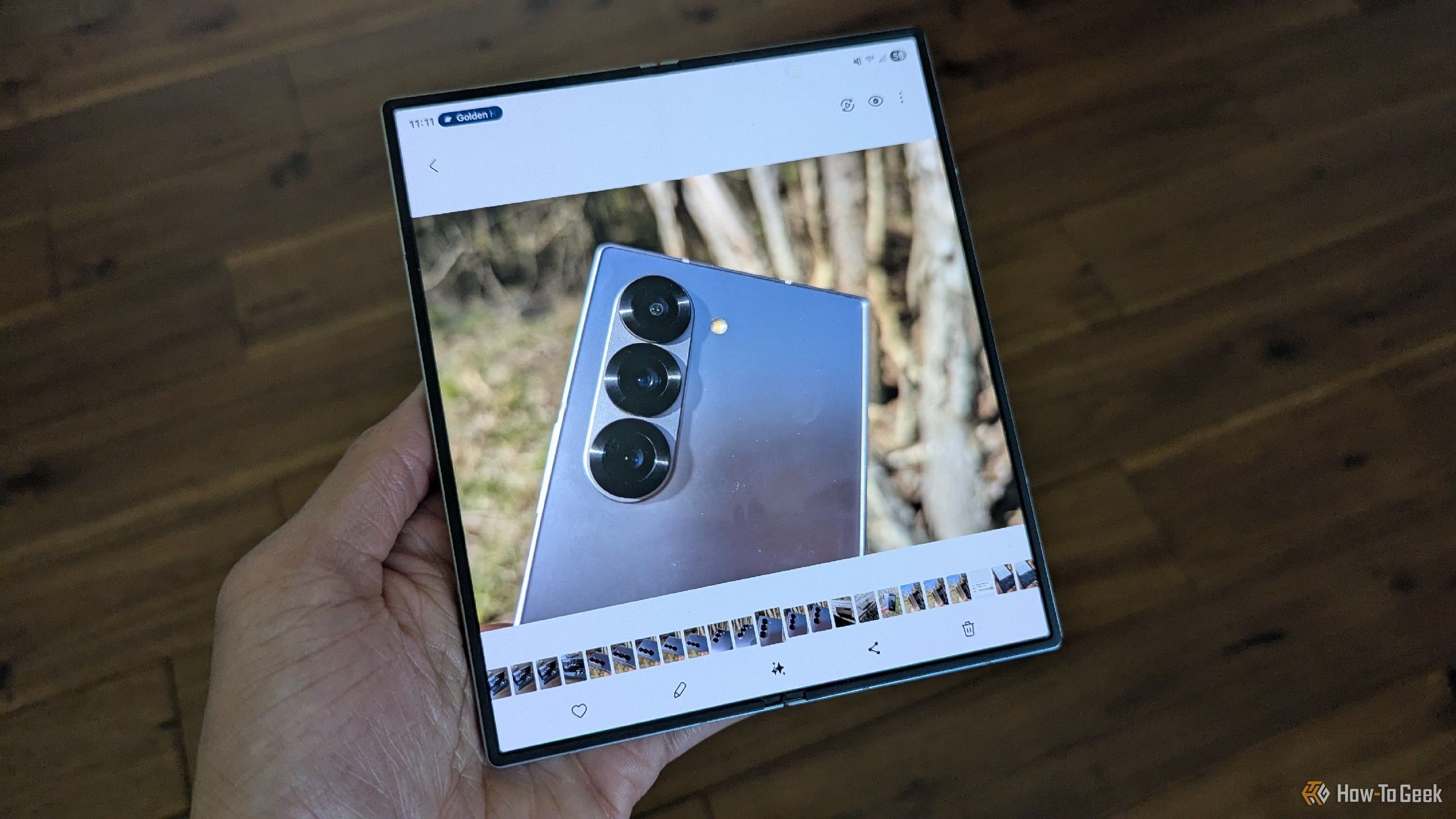Foldables don’t have better cameras than their non-folding flagship peers, but in quite a few ways, they’re still better for taking photos. There are photography options you get from having a phone that folds that a slab phone just can’t replicate.
The Galaxy S25 Ultra may have better camera hardware than the aging system in my Galaxy Z Fold 6, but would I trade in my phone for the newer camera? Tempting as the improvements in image quality may be, I’m not ready to give up the flexibility I’ve grown accustomed to.
1
Take Selfies Using the Main Camera
I’ve never been one to take many selfies, but with the Z Fold 6, the ones I do take are substantially better.

Samsung Galaxy Z Fold 6
$2020 $2320 Save
$300
The Samsung Galaxy Z Fold 6 is a foldable smartphone that combines the functionality of a tablet with the convenience of a phone. It features a large, flexible internal screen that automatically picks up where you left off on the cover display.
When I started my career as a tech journalist, getting a photo of myself was a whole affair. I generally would ask someone to take a photo for me. Doing so myself meant setting up a tripod. Phone cameras produced images that were good enough for personal memories but didn’t quite make a good professional impression. This meant I also needed to get my hands on an entry-level DSLR.
Now, front-facing cameras can take good enough selfies for an office Slack channel or a photo by a byline, but they still tend to have inferior hardware compared to the rear-facing camera on our phones. With a foldable, I get to rotate my phone around and still see myself while using the better camera.
Using a foldable is like going from a camera with a fixed screen to one that articulates. As photographers know, there are many shots that are easier to get when you don’t have to keep your face directly behind the camera. Once you switch, it can be hard to go back, even for something as stunning as the Sigma BF.
I’m sure if I owned a Galaxy S25 Ultra, I might feel that my camera’s output is a step-down. That phone has a 200MP main lens and a 50MP ultrawide. My phone has 50MP and 12MP respectively. I can also completely understand not wanting to give up the 50MP 10x zoom lens.

Samsung Galaxy S25 Ultra
The Samsung Galaxy S25 Ultra is a top-of-the-line smartphone with a 6.9-inch QHD+ Dynamic AMOLED 2X display and a 120Hz refresh rate. It boasts the Snapdragon 8 Elite processor, 12GB of RAM, and a 5,000mAh battery with 45W Super Fast Charging 2.0.
But as someone who doesn’t have that point of comparison, I think the 50MP photos coming out of my camera look great, and it’s so easy to nail that bokeh effect with very little effort.
2
Others Can See Themselves, Too
Keeping the cover screen active while taking a photo isn’t merely helpful when taking selfies. That same display can offer other people the ability to see themselves while you take their picture. They aren’t left standing there waiting for feedback. They can see for themselves that they need to scoot in or un-tuck the corner of their shirt.
Little kids have attention spans that tend to drift before you snap a shot. Their eyes wander off. Their smiles go weird. But kids are generally drawn to screens, and having one in front of them right below the lens can help focus their attention right where you need it long enough to capture the moment before they start fidgeting or run off again.
3
Your Phone Is Its Own Tripod
Purchasing one of the best tripods is are worthwhile investment, even for mobile phone photographers. Investing in a tiny tripod for your phone is enough to eliminate the concern of having shaking hands, especially if you have a way to trigger the shutter remotely. These days you can do so using a smartwatch or voice commands, depending on your phone.
With a foldable, you don’t need to bring around an extra tripod. At any time, you can plop your phone down on a stable surface, unfold the phone 90 degrees or so, and take the shot.
You can’t see your phone’s screen if you’re using the rear camera, but you still have the option if you’re wearing a Wear OS smartwatch. Samsung and Google both offer ways to use your watch as a viewfinder. Or you can stick to the front-facing selfie cam in situations where framing the shot best you can is worth the potential hit in image quality. After all, so much of what makes a good photo has to do with composition.

Related
How to Compose Your Smartphone Photos Like a Pro
Six ways you can stop taking snapshots and start taking beautiful photographs
4
Review Photos on a Much Larger Screen
I used to carry a dedicated camera around wherever I went, but those days are gone. I don’t miss reviewing photos using my DSLR’s smaller, lower-res screen. Going from that to a slab phone feels like a noticeable step-up, since I can better see the photo I just took, rather than having to wait until I’m back at a computer.
With a larger book-style, I have an even larger screen to review my photos. I love being able to immediately open Samsung Gallery and review the dozen photos I just captured on an 8-inch display. By being able to fluidly pinch and zoom, I’m able to see details I would have missed on a smaller phone or a dedicated camera.
My phone’s internal screen is 7.6 inches, which may not sound like as big an improvement over your standard 6-inch phone as it is. It’s bigger than you think due largely to the difference in aspect ratio. Many photos are 4:3, which is more square than the super-tall and narrow shape of most phones. The inner screen of a book-style foldable is similarly square, so you’re left with less letterboxing or pillarboxing.
Foldable phones tend to have good cameras, but these cameras aren’t on par with those of flagship phones, despite having high price tags. This can be frustrating, sure, but the benefits of the hinge just make taking pictures more versatile and, frankly, more fun.







